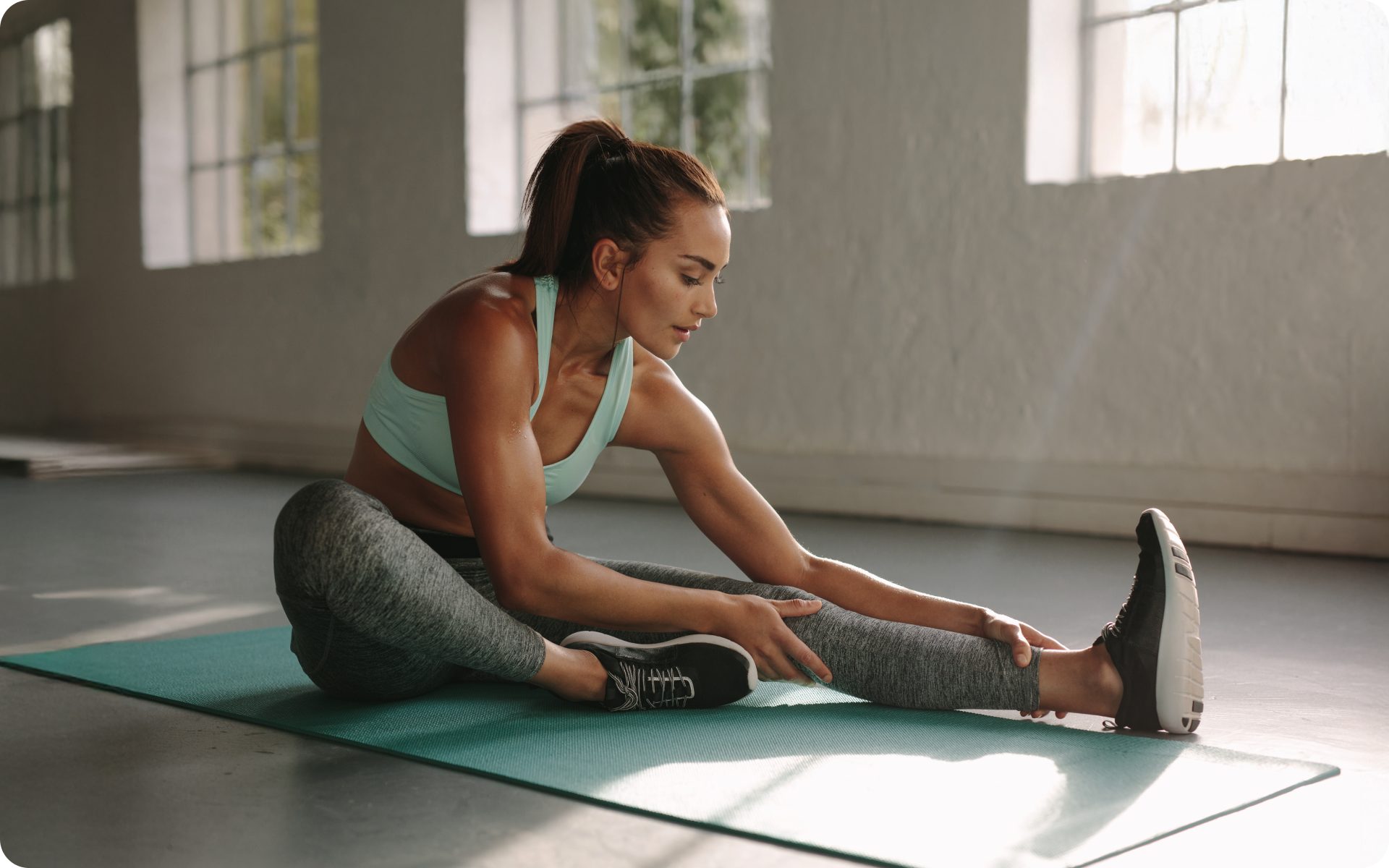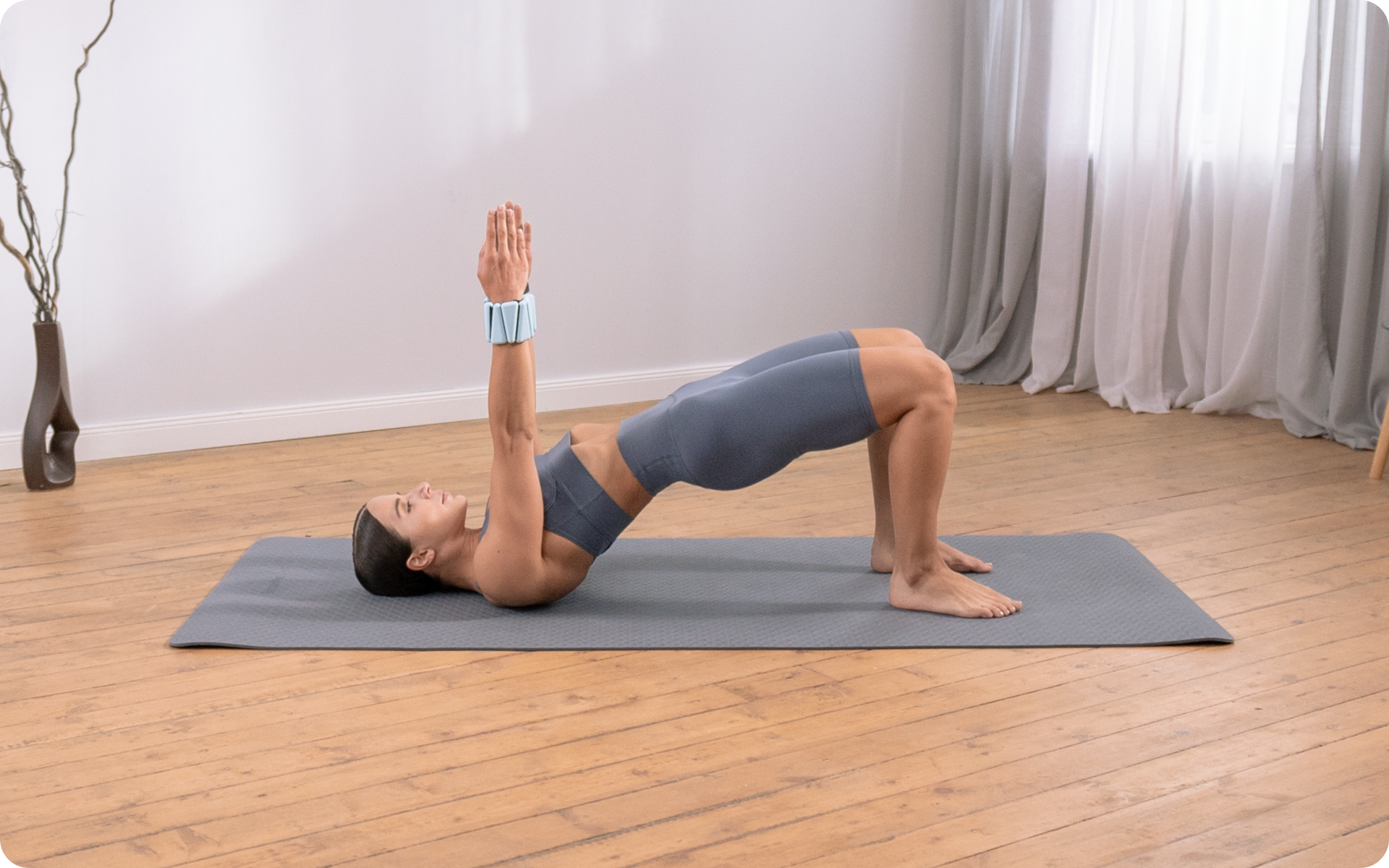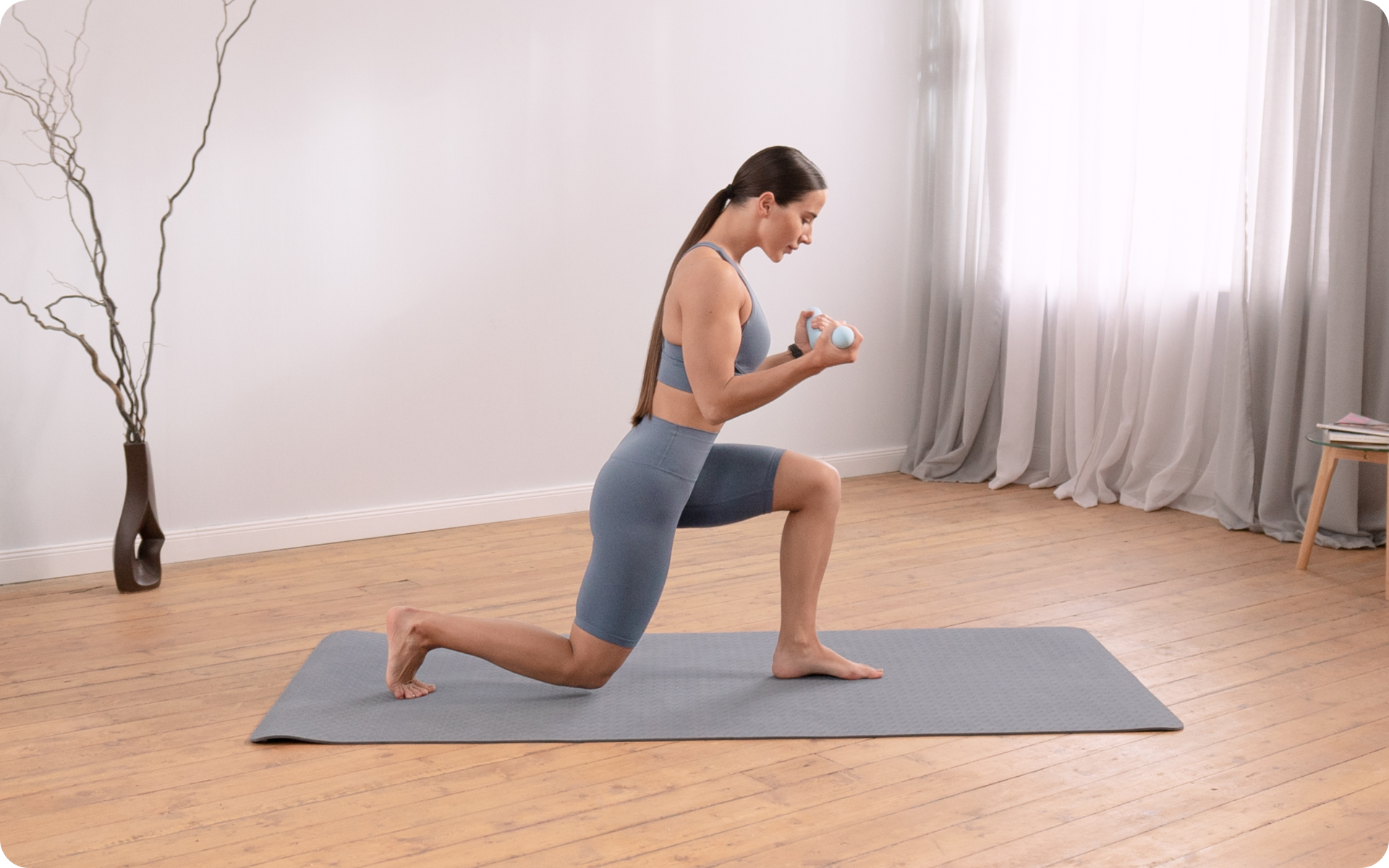The debate about the effectiveness of half squats vs. full squats goes a long way back in history. People in medicinal and fitness circles have often supported one or the other based on their evidence and experiences. Some support half squats by arguing that full squats could cause injuries and strain the legs. Meanwhile, others are more inclined towards full squats for their potential to improve muscle strength and overall performance. Knowing the half squat vs. full squat benefits will enable you to determine what should become a part of your workout routines. Factors like safety, target muscles, and sticking points are also essential to address.
Get your personalized
meal plan!
This article covers all the vital areas and may help you to curate a beneficial workout regime for yourself:
What Are Half And Full Squats?
The Half Squat
Half squats are considered a decent option for everyone starting to squat.
In this exercise, your thighs should parallel the floor during descent. These squats are essential for the exercise of the push press. Some benefits of this routine include greater knee stability, reduced risk of knee injuries, and the ability to push beyond the strength plateau. It may also play a role at improving your overall mobility (1).
The Full Squat
Full squats, as the name suggests, are the ones in which calves and hamstrings touch while the hips are closer to the ground. Many fitness experts would advise against this routine as there are higher chances of injuries.
It is essential to address that full squats may become a healthy body movement when done in an appropriate form and posture. They may include benefits like pelvic stability, the better shape of hips, and stronger leg muscles (2).
Are Half Squats Effective?
The studies of muscle activation between half and full squats found that the primary hamstring muscle, the biceps femoris, plays an equal role in both half and full squats (9). In this context, it is often argued that full squats have minimal advantages over half squats as the key muscle is equally involved.
You should work on half squats while increasing your motion range if you cannot squat below parallel while maintaining a proper form. These squats are also a critical element of the push-press exercise. If you want to improve your lifting strength, working on your half-squat technique may help. Ensure that you are using an explosive motion when you reach the bottom of the squat to return to the initial position.
Read More: 28 Days Squat Challenge For A Perky And Round Peach
What Is The Point Of Half Squats?
Most people may encounter a “sticking point” in their squat techniques. This is where it gets more pressing and challenging than the top phase of the squat. Training half squats may help you to enhance strength in that area and allow you to push beyond your plateau.
A half squat may increase force production and tensile strength of the angles found at the hips and knees (3). For some strength trainers, this may be one of the leading training exercises to increase a plateau-busting performance. The half-squat angles at the knee and hips can boost strength, receiving loads in that position.
Are Full Squats Better?
When done correctly, full squats may be one of the safest and healthiest things you can do for your leg muscles and entire body. Despite constant criticism from some medical and fitness experts, there is little or no evidence suggesting that full squats are harmful and make people prone to injuries. In fact, research often proves that full squats can be effective to prevent injuries (4).
Below, we have listed some more benefits of full squats to prove they aren’t a dangerous practice:
May Improve Strength And Movement
Full squatting is an essential strength and movement exercise for weight and powerlifters. Functional fitness experts and weightlifters require strength at the lowest point in the squat to help with lower receiving positions.
May Help To Build Stronger Legs
Full squats activate the glutes, hamstrings, and adductors (5). This may help you develop a balanced set of muscles. On the contrary, partial or half squats may contribute to an imbalance in the quadriceps-to-hamstrings ratio. This may increase the risk of low back pain and hamstring tears (6).
May Enhance The Motion Integrity
Full squats allow you to train the ankles, hips, knees, and entire body to develop smooth movement patterns (7). You will likely gain strength at the end of the motion and increase your overall body fitness. An overuse of restricted movements may often lead to restricted function and mobility. This is one of the primary reasons for including full squats in an exercise routine.
May Be Safe For The Spine
Some medical experts often have concerns about degenerative changes of tendon femoral complex and higher risks of conditions like osteoarthritis due to full squats. Modern research negates these concerns and proves that full squat training may ward off degenerative changes in the knee and spinal joints in the long term (8).
BetterMe app will kick you out of the mental funk, shake off your extra weight, rid you off your energy-zapping habits, and help you sculpt the body of your dreams. Intrigued? Hurry up and change your life for the better!
Why Are Full Squats Not Recommended?
Addressing the pros and cons of each squat will enable you to chalk out an exercise plan for yourself. Examining all angles is also essential when setting up a home gym, and you are on the fence between the purchase of half rack vs. full rack.
Even though your fitness expert may ask you to gradually increase the depth of a half-squat, you should look at the other side of the picture. Learn why full squats aren’t widely recommended to make better decisions regarding your tools and routine.
Full squats aren’t considered detrimental for individuals with healthy knees. Instead, they provide greater muscle activation, improved athletic performance, and enhanced functional motion.
On the flip side, research also reveals that deep squats with high knee flexion angles may predispose an individual to osteoarthritic changes, particularly in the cartilage behind the patella (8). Following the same lines, the research also argues that muscular activity doesn’t increase when squatting in a position where the thighs are parallel to the floor.
Your body can be trained to squat fully through physical therapy. The goal of this therapy will be to restore and maintain the body’s potential to tolerate these positions safely. You can also find out the underlying causes of joint problems and treat them with the help of your therapist.
Read More: 30-Day Abs Squat Challenge: Is It Worth The Effort?
The Bottom Line
The benefits of squats can’t be ignored, no matter which form you choose to include in your workout routine. It is advised to seek assistance from a professional fitness expert when trying to create an exercise plan. You should follow their guidance to improve your form, minimize the injury risk, and scale your muscle strength. Professional guidance will also keep you from straining your muscles beyond your tolerance potential. It is also wise to maximize your safety by using tools like racks. Learn about the differences between full rack vs. half to ensure you invest your hard-earned cash in a helpful product.
Once you’ve covered all the bases, you should be rolling on the path to a healthy lifestyle!
DISCLAIMER:
This article is intended for general informational purposes only and does not serve to address individual circumstances. It is not a substitute for professional advice or help and should not be relied on for making any kind of decision-making. Any action taken as a direct or indirect result of the information in this article is entirely at your own risk and is your sole responsibility.
BetterMe, its content staff, and its medical advisors accept no responsibility for inaccuracies, errors, misstatements, inconsistencies, or omissions and specifically disclaim any liability, loss or risk, personal, professional or otherwise, which may be incurred as a consequence, directly or indirectly, of the use and/or application of any content.
You should always seek the advice of your physician or other qualified health provider with any questions you may have regarding a medical condition or your specific situation. Never disregard professional medical advice or delay seeking it because of BetterMe content. If you suspect or think you may have a medical emergency, call your doctor.
SOURCES:
- Jump-Squat and Half-Squat Exercises: Selective Influences on Speed-Power Performance of Elite Rugby Sevens Players (2017, ncbi.nlm.nih.gov)
- Deep Squat: How to Do It, Benefits, and Muscles Worked (2021, healthline.com)
- Knee biomechanics of the dynamic squat exercise (2001, pubmed.ncbi.nlm.nih.gov)
- Full squat produces greater neuromuscular and functional adaptations and lower pain than partial squats after prolonged resistance training (2019, tandfonline.com)
- Adductors vs. Hamstrings in the Squat (n.d., themusclephd.com)
- Keep your hamstrings strong for pain-free movement (2019, bonejoint.net)
- Lower Extremity Strength and the Range of Motion in Relation to Squat Depth (2015, ncbi.nlm.nih.gov)
- Analysis of the load on the knee joint and vertebral column with changes in squatting depth and weight load (2013, pubmed.ncbi.nlm.nih.gov)











